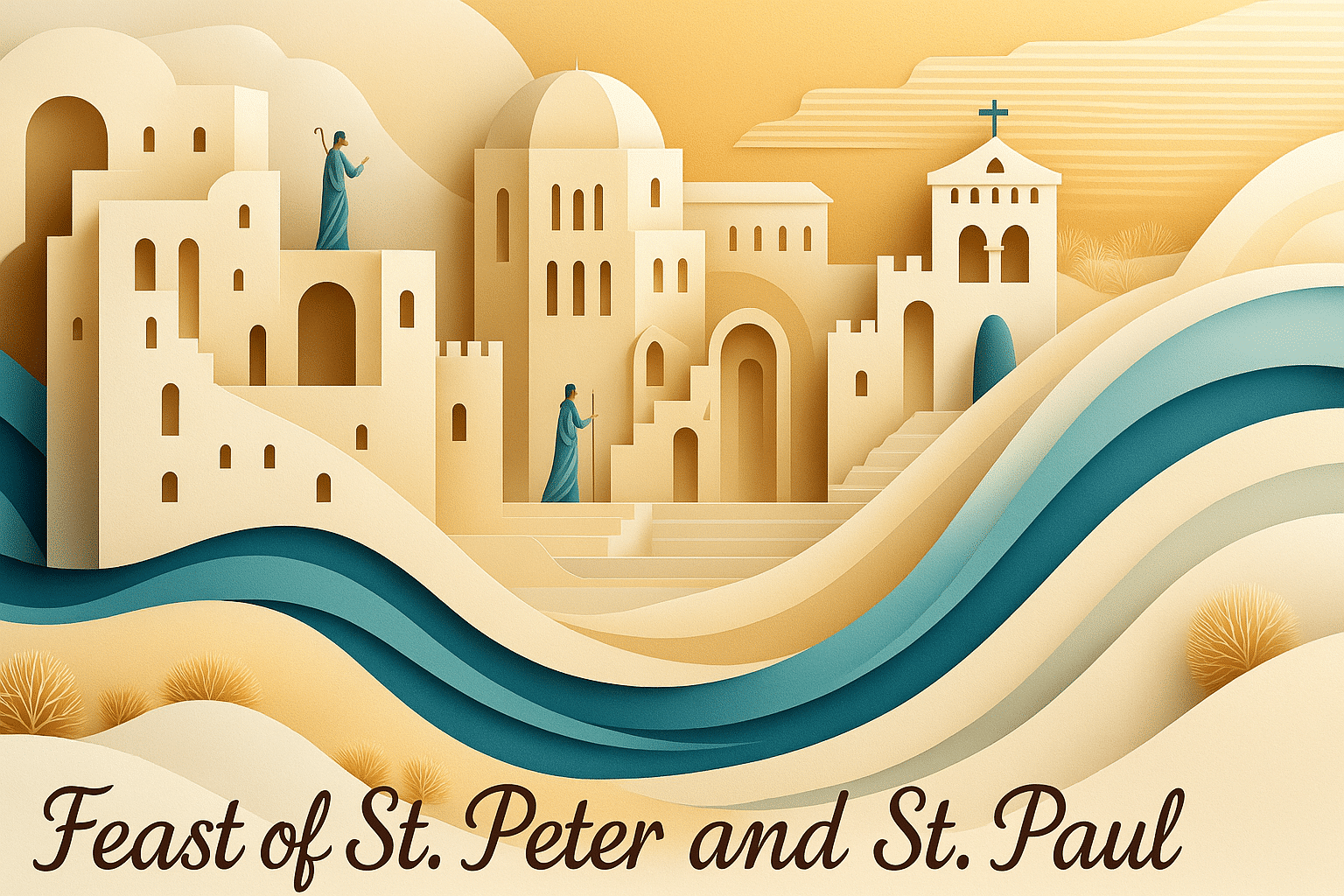What is the Feast of St. Peter and St. Paul?
The Feast of St. Peter and St. Paul is observed every year on June 29 in many countries, especially within the Roman Catholic, Eastern Orthodox, and Anglican traditions. It honors two of the most important apostles in early Christianity: Saint Peter, the first bishop of Rome, and Saint Paul, the missionary to the Gentiles. Both are seen as pillars of the Christian Church and are celebrated together because of their foundational roles in spreading the gospel.
This day is marked by church services, processions, prayers, and reflections on the lives and sacrifices of these apostles. While they had different missions and personalities, both Peter and Paul are remembered for their leadership, theological contributions, and martyrdom in Rome.
History and Origin
The joint celebration of Saints Peter and Paul on June 29 dates back to the early centuries of Christianity. According to tradition, both apostles were martyred in Rome under Emperor Nero, possibly around the year 64. Although they died at different times and places, early Christians commemorated them together because of their enormous influence on the development of the Church.
The date of June 29 may have been chosen to coincide with the dedication of two major basilicas in Rome: Saint Peter’s Basilica and the Basilica of Saint Paul Outside the Walls. By the fourth century, the feast was widely celebrated, and it became a major liturgical occasion in the Christian calendar.
In Rome, the day has special significance and is marked as a public holiday. The pope often presides over solemn masses, and the faithful reflect on the teachings, trials, and legacy of the apostles.
Who participates in the Feast of St. Peter and St. Paul?
- Christian Clergy: Lead special liturgies, give sermons, and reflect on the message of the apostles.
- Catholic and Orthodox Communities: Observe the day with reverence, especially in countries with deep Christian roots.
- Pilgrims and Devotees: Visit basilicas, cathedrals, and historical sites associated with the apostles.
- The Vatican: Holds high-level religious ceremonies, including the conferral of the pallium to new archbishops.
- General Public: Participate in processions, festivals, or simply reflect on the themes of faith and sacrifice.
Slogans and Themes
The feast often focuses on the themes of courage, faith, leadership, and unity. Saint Peter is remembered as the rock on which the Church was built, while Saint Paul is honored for his missionary zeal and theological insights. Together they represent the pastoral and missionary wings of early Christianity.
Common messages include: “Two Saints, One Mission”, “Built on the Apostles”, and “Faith through Witness”. These themes highlight their combined legacy and their shared commitment to Christ, even unto death.
Colors, Symbols, and Patterns
Colors
- Red: Symbolizes the martyrdom of both saints and is used in liturgical vestments.
- White: Represents purity, holiness, and the glory of sainthood.
- Gold: Emphasizes spiritual authority and the triumph of faith.
Symbols
- Keys: Represent Saint Peter, referring to the “keys of heaven” given to him by Christ.
- Sword: Symbolizes Saint Paul’s martyrdom and his role in spreading the Word.
- Scrolls or Books: Reflect both apostles’ contributions to scripture and teaching.
Patterns
- Crossed Keys and Sword: A traditional emblem symbolizing their joint legacy.
- Laurel Wreaths: Represent the triumph of faith over death.
- Mosaic Motifs: Reflect early Christian art, often seen in Roman churches dedicated to the apostles.
Most Used Hashtags
- #FeastOfStPeterAndStPaul
- #SaintsPeterAndPaul
- #June29
- #CatholicFeastDay
- #ApostlesOfFaith
How do you celebrate the Feast of St. Peter and St. Paul?
- Attend Mass: Join in special church services that commemorate the lives and martyrdom of the two apostles.
- Visit Churches: Explore churches or cathedrals named after Peter and Paul, especially in cities with apostolic heritage.
- Participate in Processions: In some countries, public processions and community gatherings mark the occasion.
- Read Scripture: Reflect on passages attributed to the apostles, such as Peter’s epistles or Paul’s letters.
- Share Online: Post reflections, prayers, or artwork inspired by the apostles and their message.
Why is the Feast of St. Peter and St. Paul important?
This feast is important because it honors two foundational figures in Christianity. Saint Peter, considered the first pope, represents continuity and leadership in the Church. Saint Paul, who traveled widely to spread the gospel, represents mission, theology, and transformation. Their different journeys and shared devotion illustrate the diversity and strength of early Christian witness.
Celebrating them together emphasizes unity in faith, despite different roles and paths. It’s also a time to reflect on courage, forgiveness, and the power of belief in the face of adversity. Their example continues to inspire Christians around the world to live their faith with purpose and conviction.
Features
- Religious
